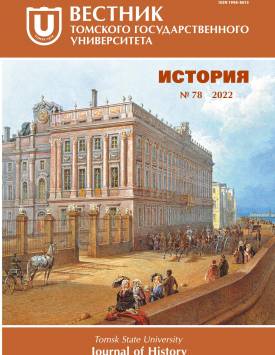Traditional dwelling of Russian Altai people and Chinese Mongols: comparative ethnographic analysis
The article characterizes a very important part of Russian Altai and Chinese Mongols’ material culture: the types of traditional dwellings. These dwellings, which are considered to be a special type of architecture, were formed in close connection with the landscape, the main occupations and way of life. The article determines main factors that influenced these peoples’ choice of types of dwellings and highlights the similarities and differences in the types of dwellings. The article makes a conclusion is about the similarities of traditional dwellings caused by similar living conditions and economic traditions. The problem of the origin and evolution of dwellings of nomadic peoples in Russian historiography has been studied since the second half of the 19th century up to the present. The features of the construction of dwellings of the Altai peoples of Russia and the Mongols of China are due to the nomadic way of life, harsh natural conditions, and unfavorable climate. The traditional dwelling of the Altaians of Russia and the Mongols of China is a mobile, light and comfortable yurt. The cone-shaped yurt of the Altaian has some similarities with the traditional dwellings of the Mongols of China, their main difference lies in the yurt design and material of the covering. There are several types of dwellings in the culture of the Altai peoples and Mongols, determined by the environment and lifestyle. The common features of dwellings of these two folks can be explained both by a similar habitat and by ethnogenetic ties. The dwelling of the nomads of the Altai Mountains differs from the dwelling of the nomads of China in its greater sophistication and desire for a more settled way of life. However, the yurt still seems to be the most characteristic type of dwelling among the nomadic peoples of the Altai Mountains and China. The traditional dwellings of the nomads are a reliable, comfortable shelter from bad weather and harsh climatic conditions, the optimal type of dwellings in the conditions of a mobile lifestyle associated with cattle breeding and the need for new pastures. Yurt, which was invented in the middle of the first millennium AD, fits well to nomadic life. Each nation had its own version of the yurt, however, the similarity of the existence of the yurt among the two folks can be explained both by the specific features of their economy and lifestyle, and by the similar climate in their places of residence. And also we should not forget about the turbulent history of Central Asia, when great empires arose and collapsed, the heirs of which are the modern Turkic and Mongolian peoples, between whom there were strong and close cultural contacts. The author declares no conflicts of interests.
Keywords
altai people, mongols, nomadic culture, ecosystem, dwelling places types, national cultureAuthors
| Name | Organization | |
| Meng Yang | Tomsk State University | mengyang777@mail.ru |
References

Traditional dwelling of Russian Altai people and Chinese Mongols: comparative ethnographic analysis | Tomsk State University Journal of History. 2022. № 78. DOI: 10.17223/19988613/78/20
